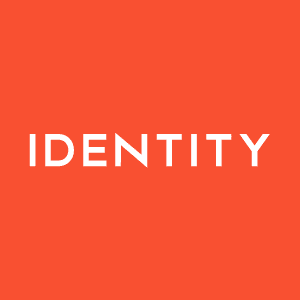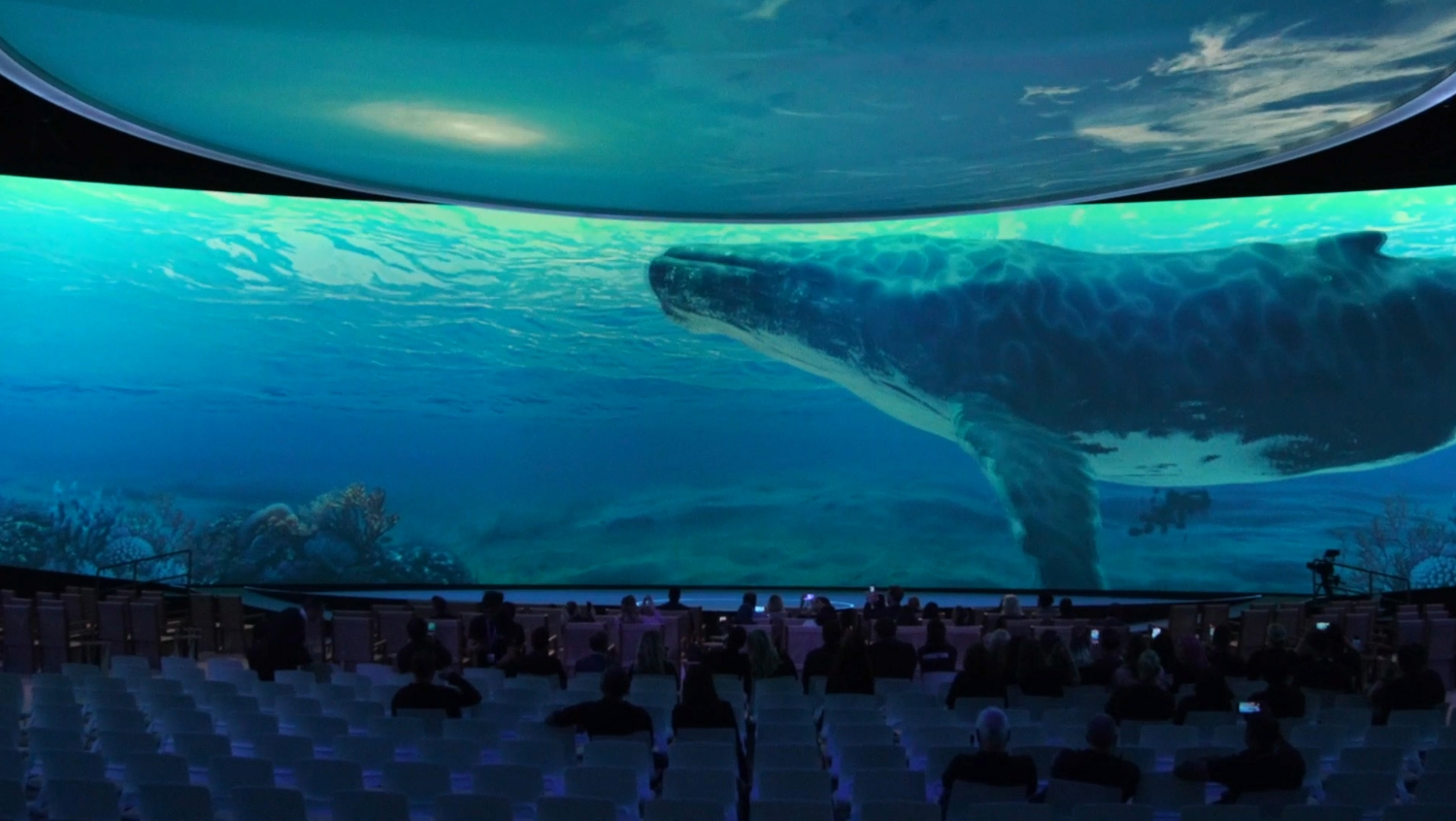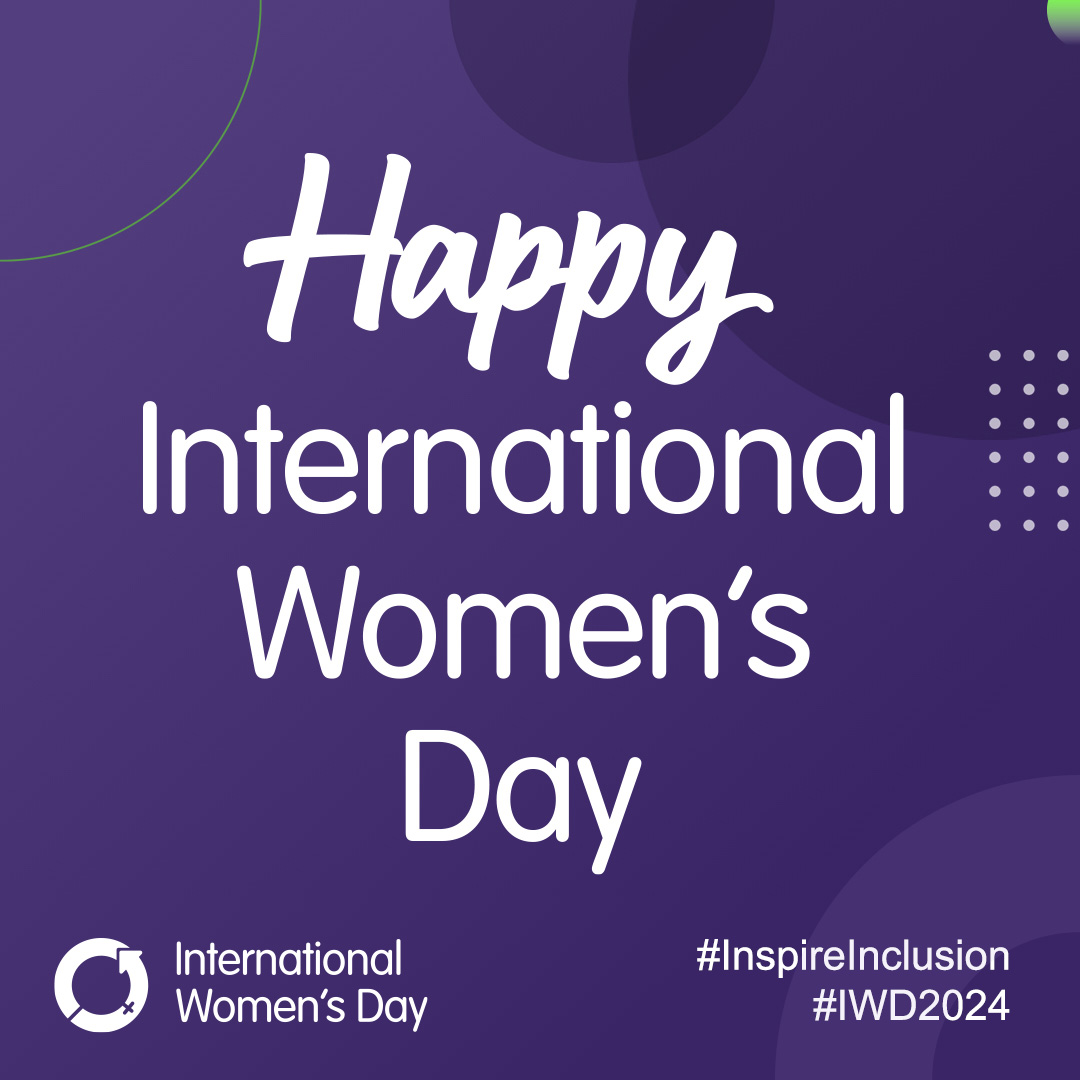What Is The Future Of Out Of Home (OOH) & Digital Out Of Home (DOOH) Advertising?
Out of Home (OOH) is defined as advertising that reaches people outside of their homes in public places. This fast-growing industry includes traditional media displayed on billboards and posters, typically in waiting areas (such as train stations or bus shelters), as well as roads, motorways and in-transit. The entire UK OOH industry is worth more than £1 billion.
Digital Out Of Home (DOOH) lets brands distribute creative, dynamic and (vitally) on-the-fly messaging into essentially any venue, including shopping centres, cinemas, restaurants, bars, gyms and petrol stations. DOOH ad spending is growing at a phenomenal rate and is expected to account for 47% of the total UK OOH market in 2018, reports eMarketer.
But what can we expect from this exciting industry in 2018? In this article, we take a look at our predictions for the new year.
Out Of Home (OOH)
As with most media platforms, the drive forward in data and digital innovation is transforming the Out of Home industry. From the way that we view, serve and buy OOH ads, time, content and contextual relevance will be the new pillars of OOH media placement. Data from our mobiles, smart watches and other wearable tech will change the way Digital Out of Home is targeted and deployed, creating ads that are highly relevant to those around them. The data feedback loop will also make them more measurable and powerful than ever before.
Other recognition technologies will also play a huge part in the continuing evolution of DOOH. We’ve already seen the emergence of gender recognition, gesture recognition, gaze tracking and vehicle recognition (via the number plate and registered owner) with these technologies set to continue to things like mood awareness, heart rate and facial expression tracking allowing a DOOH to sense a person’s emotional state and serve a relevant ad.
Retargeting across OOH and DOOH formats will become a possibility with ads seemingly following you around as you move, even across platforms onto your mobile. You may see an ad for a billboard on an underground, see it on the street as you exit then see it again on a digital screen in your favourite coffee shop. The Battersea Dogs Home campaign is a simplified and early example of how this may become part of our daily lives, as they gave a high-tech tug at the heartstrings of people wandering around a shopping centre to encourage adoption of their animals.
This drive for contextual and relevant advertising is causing a shift in the buying model to real-time buying where advertisers can quickly and ably respond to current circumstances and consumer sentiment or adapt and optimise creative at greater speed to capitalise on their investments. This model may also be based on impressions rather than time/location as DOOH becomes more and more aligned and integrated with other online platforms.
Digital Out Of Home (DOOH)
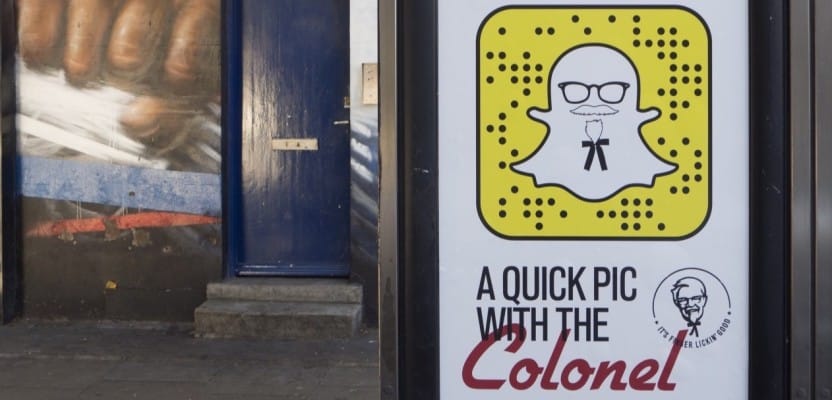
Interactivity and engagement will also continue to play a huge role in the development of DOOH. We’ve already seen this to a certain extent with NFC or QR codes where users are encouraged to use their smartphones to download songs, videos, open URLs etc. KFC used ‘snap to unlock’ technology in partnership with Snapchat, a perfect way to tap into the millennial mindset.
It’s only a matter of time before the lines between OOH, mobile and digital merge, with augmented reality (AR) and the ‘real world’ not so much blurred, as interwoven into an integrated OOH-mobile tapestry.
DOOH will become a more and more important part of making our cities ‘smarter’. Again, we’re already starting to see this happen. In Birmingham and Manchester, Signature Outdoor’s The Loop delivers 22 full-motion digital locations, linked with Wi-Fi, equipped with facial recognition and offering connectivity for mobile audiences.
In New York, the network of LinkNYC public Wi-Fi hubs combines digital signage with superfast Wi-Fi, built-in device-charging and a tablet giving access to local maps and other points of interest.
And in Paris, 100 of the city’s iconic newspaper kiosks will be upgraded next year with DOOH touchscreens, offering digital self-service, event-ticket sales and device-charging facilities.
Further examples of the rise of interactivity in DOOH:

- The NHS virtual blood donation is a great example of an engaging interactive DOOH campaign
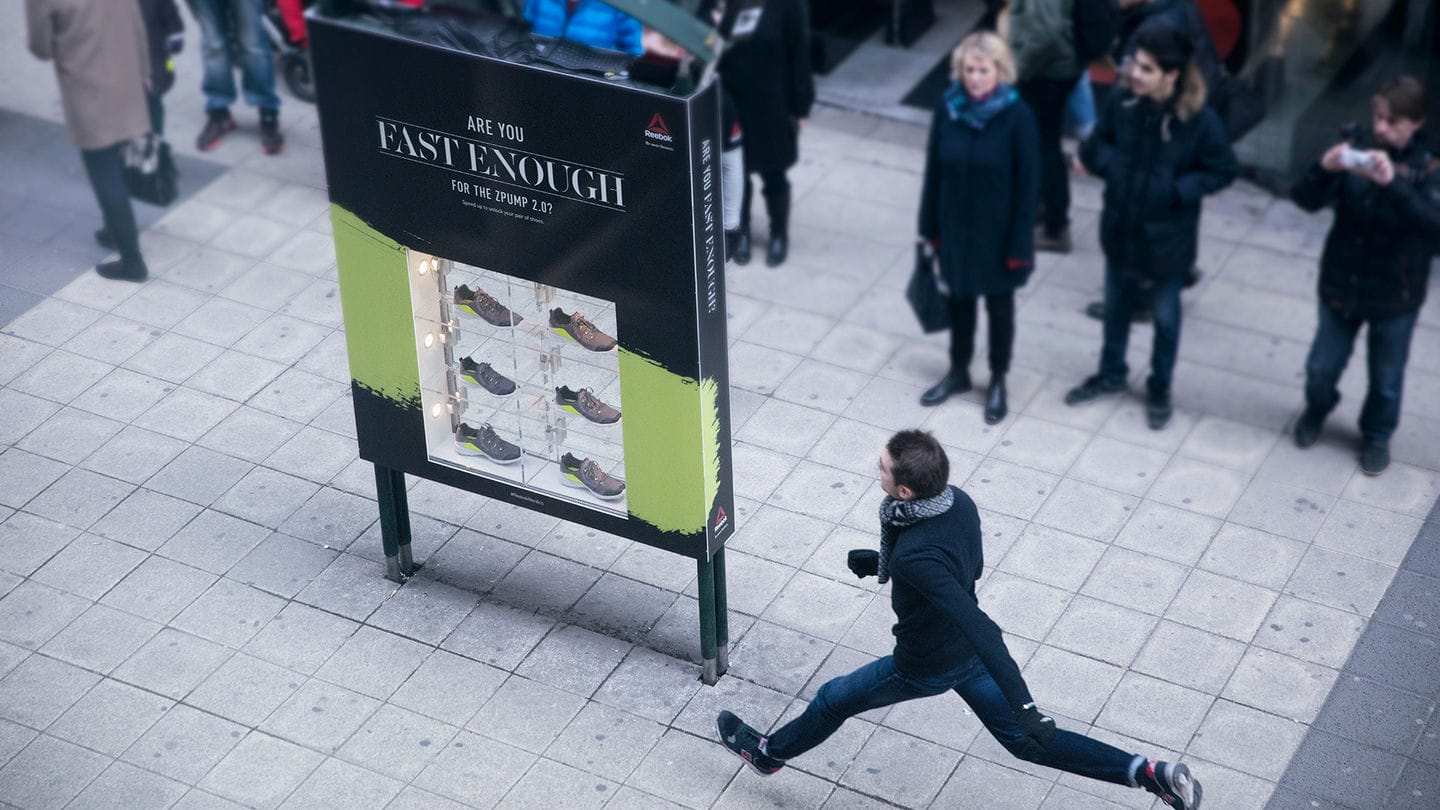
- This Reebok outdoor ad with an integrated speed camera encouraged people to run past the ad, in an attempt to beat a 10.5 mile per hour pace and win a pair of trainers
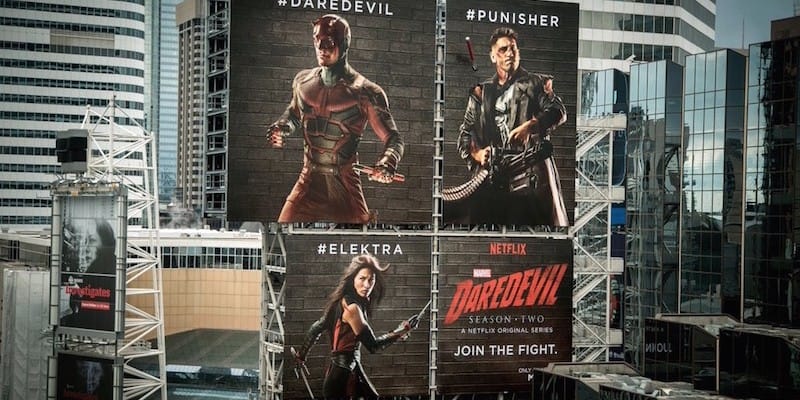
Netflix billboards: viewers could tweet in support of their favourite Daredevil characters who would then enact damage on rival character’s billboards
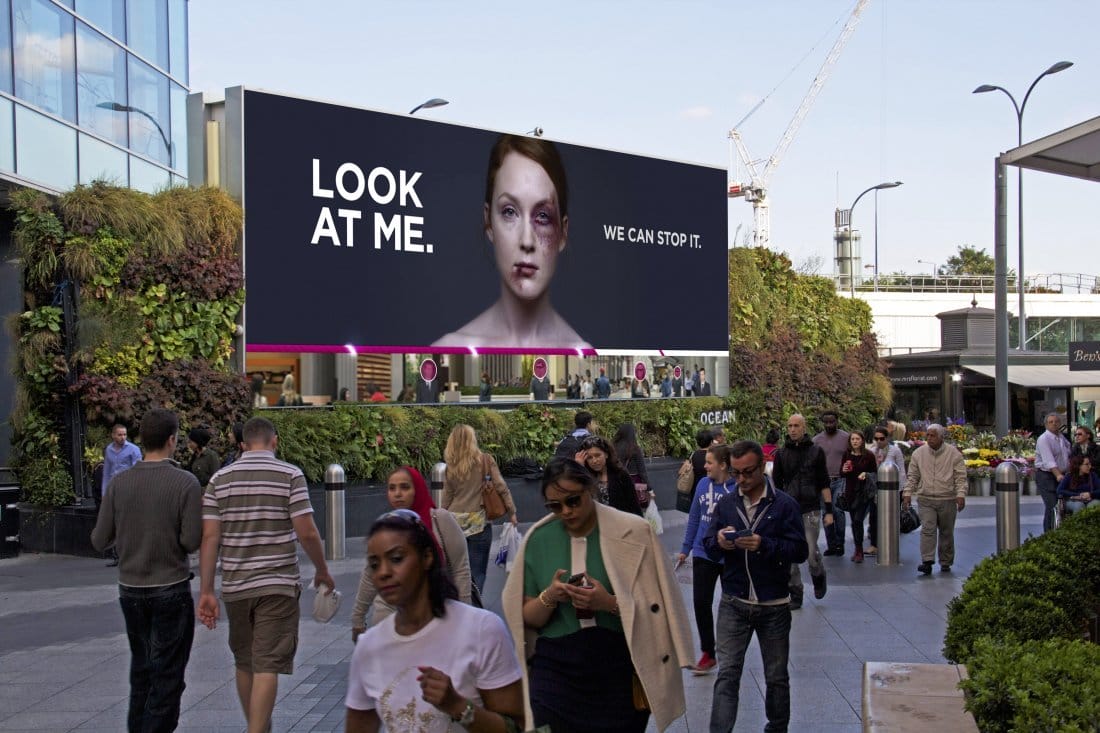
- A Women’s Aid billboard used facial recognition technology to heal an image of a woman’s bruised face the more people looked at the panel, as part of the organisation’s “Don’t turn a blind eye” campaign
Out of Home advertising is a fast-growing industry and is only set to develop further with new technology trends over the year. It is also set to grow due to how we view, serve and buy OOH ads and their products, as smartphones, smartwatches and wearable tech change our perception of advertisements in 2018.
For more information on OOH and DOOH advertising, and how we can help with your next campaign, contact Identity today at 01323 469111 or email letstalk@identitygroup.co.uk.


